I. Introduction
Welcome to our blog post on soundproofing with moving blankets! In this post, we’ll address the question “Are moving blankets good for soundproofing?” and provide insight into their effectiveness for this use. Soundproofing can be vitally important in many environments from recording studios to noisy offices to residential settings near busy streets; so we understand the necessity of finding affordable yet practical solutions; thus why we will explore thick moving blankets’ potential for soundproofing purposes.
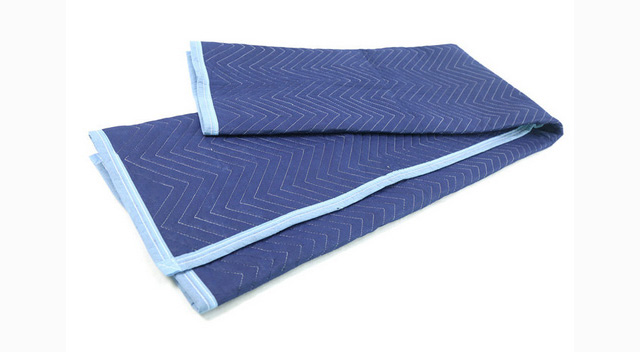
II. Understanding Moving Blankets
Moving blankets, also referred to as furniture pads or packing blankets, are thick and durable blankets designed to safeguard furniture and delicate objects during transport. Common materials for such blankets include polyester or cotton blends that offer cushioning properties as well as shock absorption capabilities. Available in different sizes and thicknesses to meet different transport needs of various items being transported, they come with customized designs specifically tailored for these tasks.
Thick moving blanket has many uses within the industry. Here are a few.
Heavy moving blankets have long been an indispensable tool in the transportation industry, serving to protect furniture and fragile items during their journey from scratches, dents and other forms of damage during transit. The cheap moving blankets are used by professional movers, furniture manufacturers, individuals relocating goods or transporting their own possessions.
Do moving blankets absorb sound? Yes. Grommeted moving blankets offer more versatility than they’re often given credit for outside the moving industry. Their thick and dense composition make them suitable for various uses – including soundproofing. As we explore further into this topic, we will learn more about how moving blanket could possibly contribute to creating an acoustically controlled environment by helping reduce noise pollution.
Stay tuned for our next section, in which we will explore how moving blankets are effective at soundproofing and how their characteristics contribute to noise reduction.
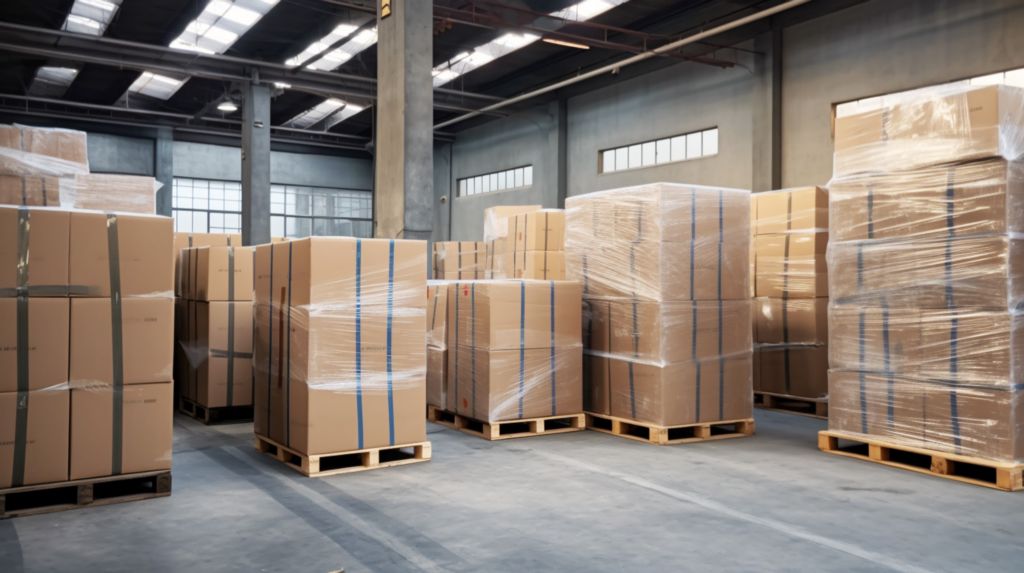
III. Soundproofing Basics
Before we delve into the use of best moving blankets for soundproofing, let’s first understand its basic premise. Soundproofing involves decreasing or eliminating the transmission of sound from one area to another and is essential in environments requiring noise control such as recording studios, home theaters or bedrooms near busy streets.
Soundproofing plays a critical role in creating a peaceful and relaxing environment free from noise disturbances. From minimizing external noise entering a room to blocking sound from leaving it, soundproofing techniques and materials play a pivotal role in providing the necessary acoustic isolation for maximum results.
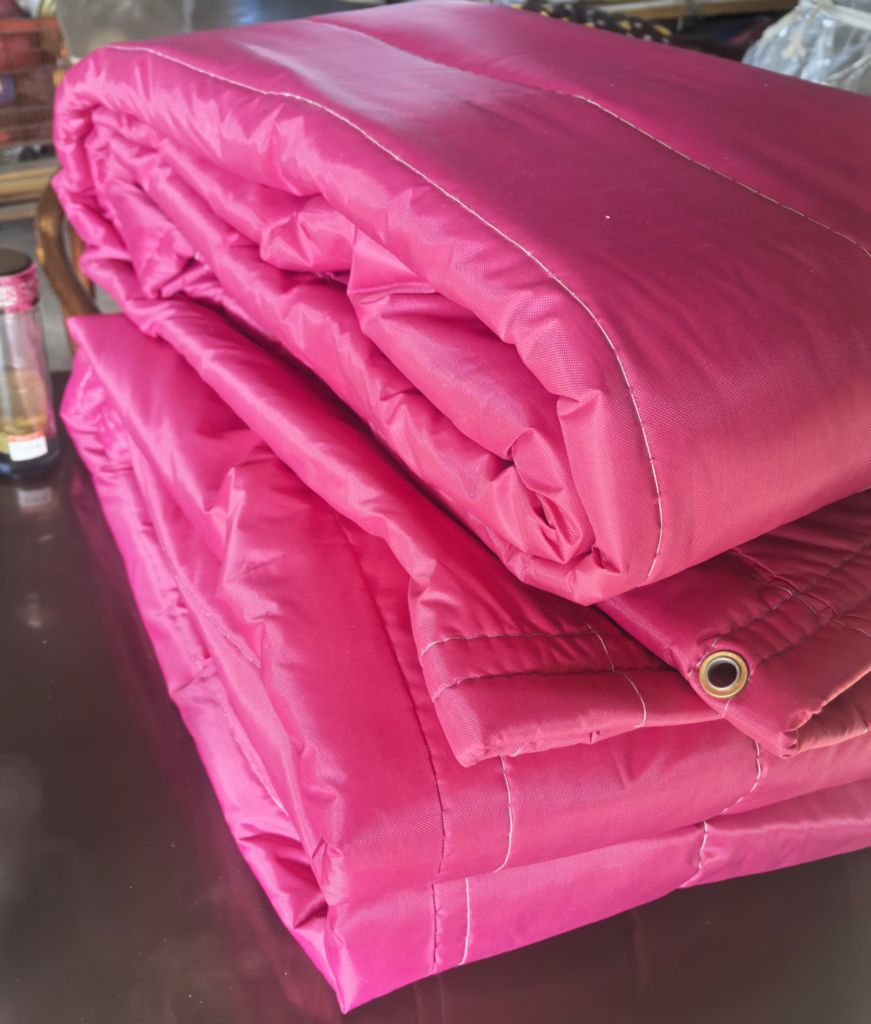
IV. Are Moving Blankets Effective Soundproofers?
Evaluation of Moving Blanket Thickness and Density
Thickness and density are two crucial elements that define the soundproofing capabilities of insulated moving blankets, with thickness being determined by how thick or dense they are. Grommeted moving blanket typically range in thickness between 1/4 in to 3/4 inch. Thicker hanging moving blankets tend to absorb and block sound waves more efficiently while denser blankets tend to reduce noise transmission more efficiently.
If you’re seeking soundproofing using moving blanket insulation, thicker and denser options may provide better acoustic absorption and can create an altogether more soundproof environment.
How moving blankets can absorb and minimize sound
Moving blankets with loops are made from sound-absorbing materials like polyester or cotton that help absorb soundwaves and reduce their transmission. Proper installation of custom moving blankets can absorb and dampen noise levels to create a quieter space.
Heavy duty moving blankets with grommets may provide some level of sound reduction, though their effectiveness may not match up to more specialized soundproofing materials designed specifically for this task. Still, high quality moving blankets may offer cost-effective alternatives in certain applications.
Comparison of moving blankets equipped with soundproofing materials
When selecting between industrial moving blankets and specialized soundproofing materials, it’s crucial to carefully assess your specific soundproofing project requirements. Acoustic panels or foam are specifically engineered to absorb and block sound waves more effectively than blankets do, providing superior performance for soundproofing projects.
Moving blankets as insulation have their own distinct set of advantages. These blankets tend to be more cost-effective and versatile than their alternatives, making them suitable for temporary soundproofing solutions or budget restrictions. Furthermore, moving blankets for sound dampening can easily be installed or hung up when required and offer flexibility when used.
In the next section, we will investigate the advantages and drawbacks of using grommet moving blankets for soundproofing purposes and offer strategies on how to maximize their effectiveness.
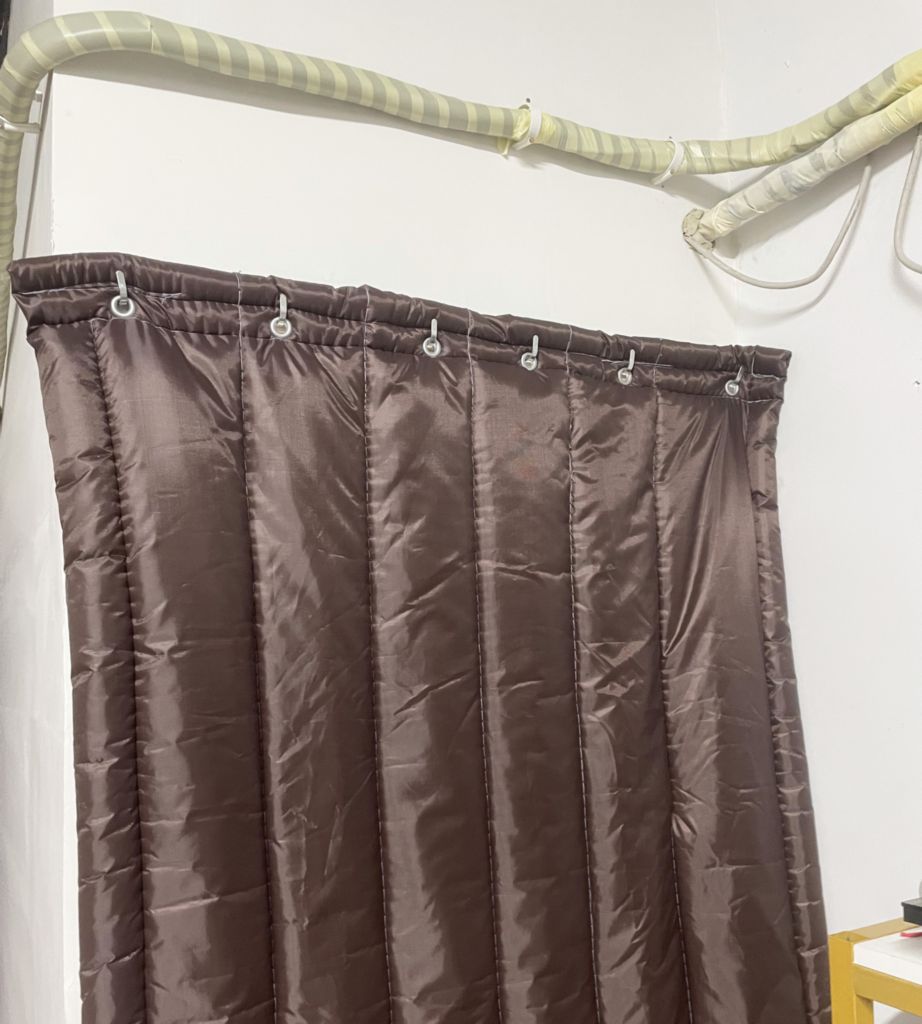
V. Considerations and Potential Consequences of Moving Blankets for Soundproofing
Do moving blankets block sound? Yes. Utilising moving blankets for soundproofing offers several advantages. Let’s examine some of these advantages:
- Cost-Efficient: How much are moving blankets? Moving blankets for insulation are more cost-effective compared to specialized soundproofing materials, making them a budget-friendly solution. They’re an especially viable solution for temporary or budget soundproofing solutions.
- Versatility: Heavy moving blankets with grommets are highly flexible products and can be used for various applications beyond soundproofing, from hanging or installing them on walls, doors, or windows to providing flexible use in various situations – ideal for both residential and commercial spaces alike.
- Easy Installation: Moving blankets make soundproofing installation relatively straightforward, as many feature grommets or loops for effortless hanging or securing – an attractive feature for DIY enthusiasts who value ease. It makes them an attractive solution.
Moving blankets have their own set of benefits when used for soundproofing; however, it’s essential to be aware of their limitations and consider certain factors when using them for this purpose:
- Soundproofing Level: Moving blankets may not provide the same level of soundproofing as specialist soundproofing materials; however, they can help reduce noise to some extent; for more demanding soundproofing requirements it may be necessary to explore additional solutions.
- Thickness and Density: When selecting moving blankets for soundproofing purposes, their effectiveness depends heavily on their thickness and density. Thicker and denser blankets tend to provide better sound absorption. Ideally, choose blankets whose thickness and density best meet your noise reduction requirements.
- Aesthetics: Moving blankets may not always be the most aesthetically pleasing solution for soundproofing a room, as their primary use is protection during transportation and may not blend seamlessly into its aesthetics. Consider this factor if aesthetics is of primary concern.
Evaluation of other Soundproofing solutions
Before choosing between moving blankets and other soundproofing options, it is crucial to assess the specific requirements and constraints of your project. Specialized soundproofing materials like acoustic panels, foam and soundproof curtains offer superior noise-reduction properties than blankets alone.
However, moving blankets remain an effective alternative in certain scenarios. They offer cost-effective soundproofing solutions for temporary needs or situations with tight budget constraints; their convenient setup process and easy do-it-yourself approach make them an appealing option for DIY enthusiasts. Moving blanket alternatives are acoustic blankets.
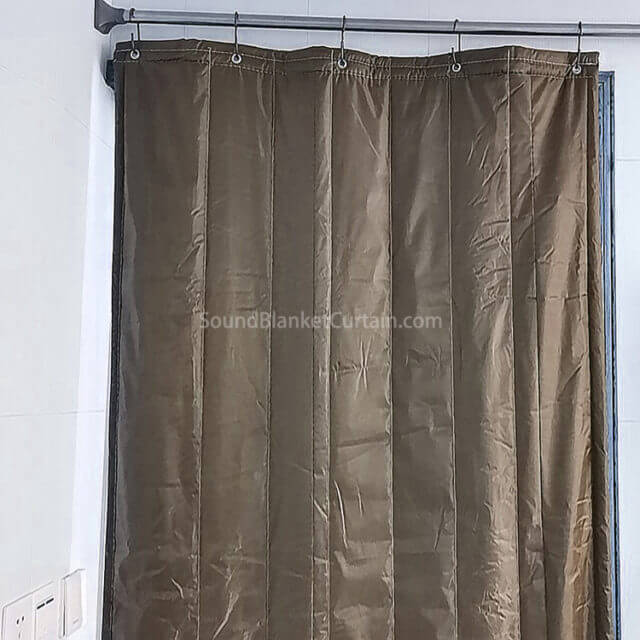
Moving Blankets for Sound Absorption
Heavy Moving Blanket for Soundproofing Acoustic Treatment | Are Moving Blankets Good for Soundproofing? Do Moving Blankets Work for Soundproofing?
VI. Tips for Utilizing Moving Blankets as Soundproofing Methods
How to hang moving blankets? Installation is key for optimizing the effectiveness of moving blankets as soundproofing solutions; here are a few things to remember:
- Cover Entire Surfaces: Make sure the moving blankets cover every surface you intend to soundproof – including walls, doors, windows or any other sources of noise transmission – that needs soundproofing.
- Overlap and Seal Edges: When installing multiple moving blankets, overlap them slightly to form a tighter seal and use clips or adhesive tape to secure their edges and avoid gaps which allow sound leakage through.
- Layered Moving Blankets: For enhanced noise absorption, double layering your moving blankets is recommended as this can increase their ability to dampen noise and reduce it further.
How to hang moving blankets for soundproofing purposes
Hanging moving blankets effectively is key for optimal soundproofing. Here’s a step-by-step guide:
- Determine Locations: Select areas in which to place the moving blanket grommet for soundproofing purposes – such as walls, doors or windows.
- Attach Grommets or Loops: If the moving blanket contains grommets or loops, use hooks, nails or curtain rods to attach them securely and evenly distribute their grommets or loops for optimal support. Ensure their distribution across each inch for even support.
- Secure Moving Blankets: Once in place, securely fasten all moving blankets so as to minimize movement or sagging and maintain their ability to reduce noise levels effectively. This will keep them effective as noise abaters.
Tips and advice for optimizing soundproofing using moving blankets
Here are a few additional strategies and methods for using moving blankets as soundproofing agents:
- Seal Cracks and Gaps: Prior to installing moving blankets, inspect the area for any cracks or gaps that might allow sound waves to seep through. Apply caulk or weatherstripping over these openings for optimal soundproofing results.
- Combine with Other Materials: When looking to soundproof your space effectively, using moving blankets along with other soundproofing materials like acoustic foam or panels may provide more comprehensive soundproofing solutions.
- Regular Maintenance: Conduct regular checks on moving blankets for signs of wear or damage and replacement as soon as they lose effectiveness or no longer meet optimal condition standards.
Follow these steps to use moving blankets effectively for soundproofing purposes and create an acoustically controlled environment.
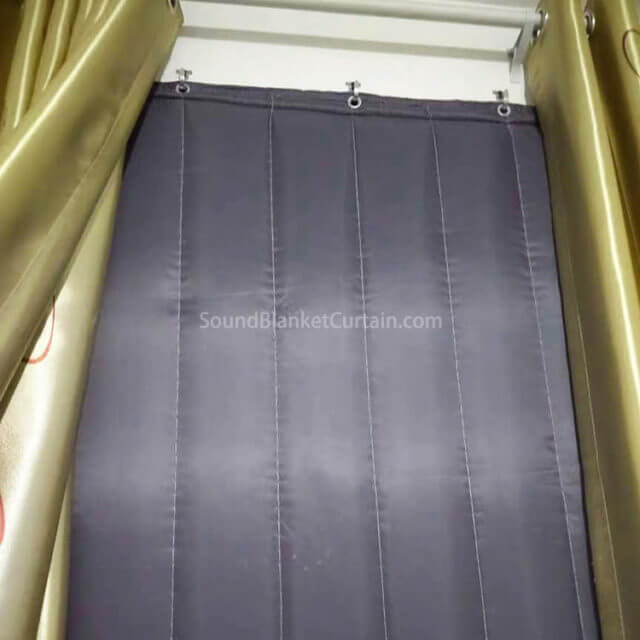
Moving Blankets with Grommets
Soundproofing with Moving Blankets Moving Blanket Grommets | New Moving Blankets with Eyelets Updated Version Moving Blanket with Grommets
VII. Conclusion
In this blog post, we examined whether moving blankets are useful in soundproofing applications and explored their efficacy as soundproofing devices. Here is a recap of key points covered:
- Moving blankets (sometimes known as furniture pads or packing blankets) are thick and durable blankets designed to protect furniture during transportation. Moving blankets have various characteristics which make them suitable for soundproofing such as their thickness and density, which make them useful as soundproofing blankets.
- Moving blankets can provide effective soundproofing solutions by trapping and dissipating sound waves, thus absorbing and reducing sound levels. They’re more cost-effective than specialized soundproofing materials – providing a cost-efficient option for certain applications.
- However, it’s essential to be mindful of the limitations associated with moving blankets such as their level of soundproofing or aesthetic appeal.
Moving blankets provide soundproofing protection. Here are our thoughts on their efficacy for soundproofing purposes.
Are moving blankets soundproof? Yes, but moving blanket sound treatment may not provide the same level of soundproofing as more specialized materials; however, they still deliver satisfactory results in some circumstances. They’re especially useful for budget-minded users or temporary soundproofing solutions. If you need the answer to acoustic blankets vs moving blankets, which is better? Acoustic blanket is.
When using moving blankets for soundproofing purposes, it’s essential that thicker and denser ones be selected to maximize sound absorption. Proper installation techniques like covering all surfaces or sealing edges will also increase their effectiveness.
For projects with more complex soundproofing needs, more specialized materials may be the optimal solution. When assessing these needs for any given project, be sure to factor in considerations like budget, aesthetics and desired levels of noise reduction.
Moving blankets are an affordable and practical solution for soundproofing environments, offering versatility and easy installation. While not providing complete soundproofing protection, when used appropriately they can help create a more controlled acoustical environment.
Hopefully this article has provided valuable insight into the potential of moving blankets for soundproofing purposes. Keep in mind your individual needs and requirements when selecting an optimal soundproofing solution such as sound proof drapes for your space.
Whenever you require any further questions or need assistance with your soundproofing project, feel free to reach out – we are always here for you.








